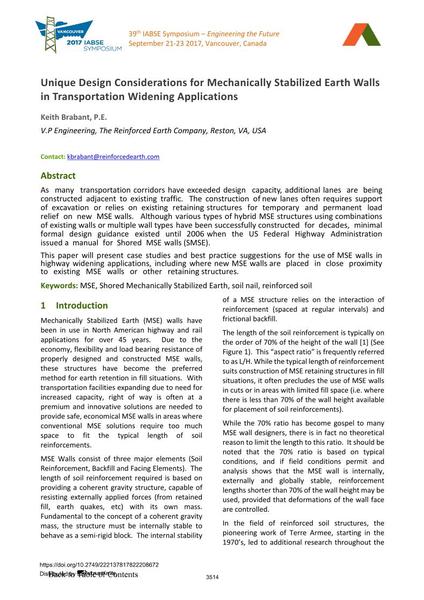Unique Design Considerations for Mechanically Stabilized Earth Walls in Transportation Widening Applications

|
|
|||||||||||
Détails bibliographiques
| Auteur(s): |
Keith Brabant
(V.P Engineering, The Reinforced Earth Company, Reston, VA, USA)
|
||||
|---|---|---|---|---|---|
| Médium: | papier de conférence | ||||
| Langue(s): | anglais | ||||
| Conférence: | IABSE Symposium: Engineering the Future, Vancouver, Canada, 21-23 September 2017 | ||||
| Publié dans: | IABSE Symposium Vancouver 2017 | ||||
|
|||||
| Page(s): | 3514-3521 | ||||
| Nombre total de pages (du PDF): | 8 | ||||
| Année: | 2017 | ||||
| DOI: | 10.2749/222137817822208672 | ||||
| Abstrait: |
As many transportation corridors have exceeded design capacity, additional lanes are being constructed adjacent to existing traffic. The construction of new lanes often requires support of excavation or relies on existing retaining structures for temporary and permanent load relief on new MSE walls. Although various types of hybrid MSE structures using combinations of existing walls or multiple wall types have been successfully constructed for decades, minimal formal design guidance existed until 2006 when the US Federal Highway Administration issued a manual for Shored MSE walls (SMSE). This paper will present case studies and best practice suggestions for the use of MSE walls in highway widening applications, including where new MSE walls are placed in close proximity to existing MSE walls or other retaining structures. |
||||
| Mots-clé: |
terre armé
|
||||
